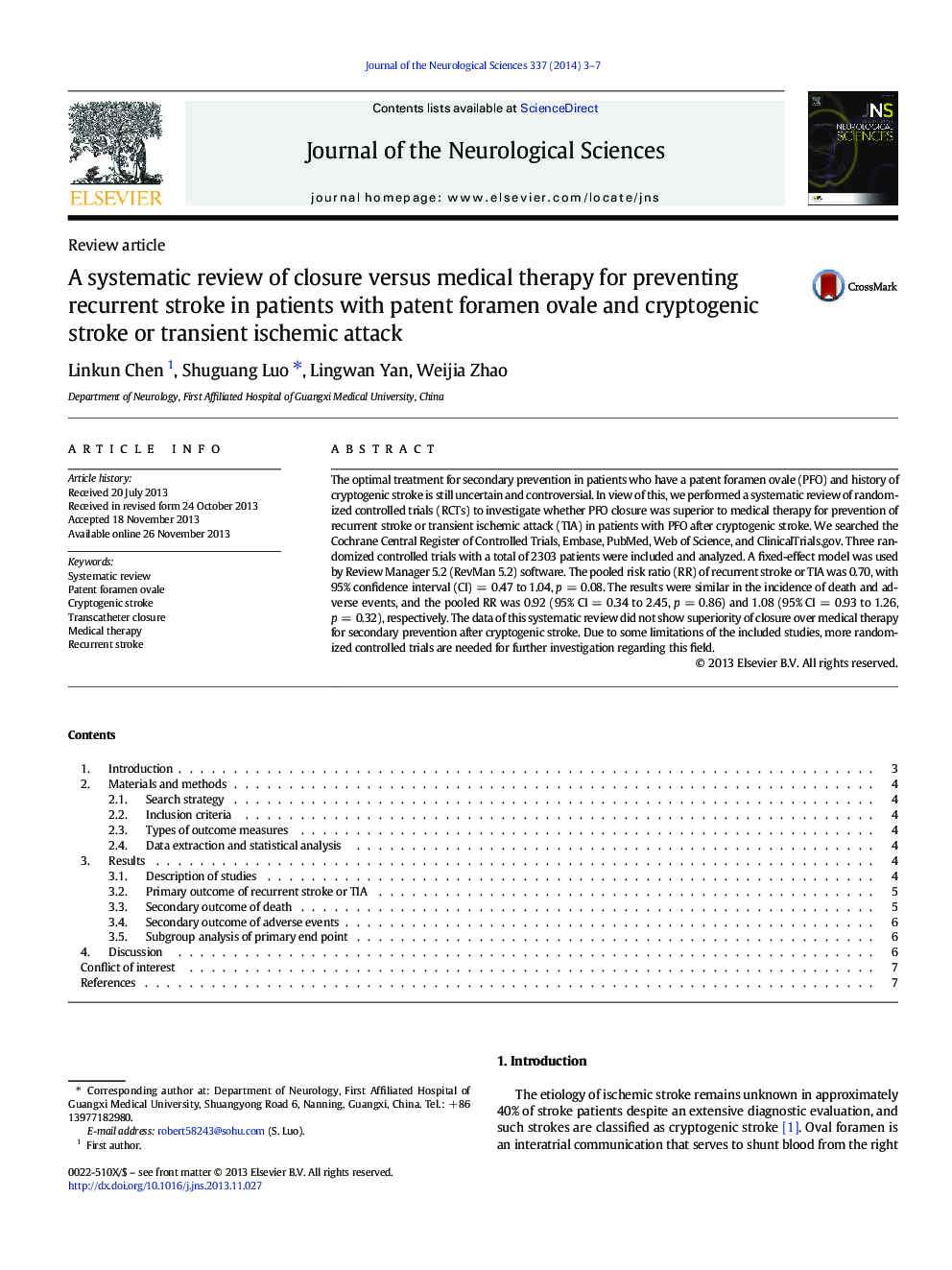| Article ID | Journal | Published Year | Pages | File Type |
|---|---|---|---|---|
| 8277968 | Journal of the Neurological Sciences | 2014 | 5 Pages |
Abstract
The optimal treatment for secondary prevention in patients who have a patent foramen ovale (PFO) and history of cryptogenic stroke is still uncertain and controversial. In view of this, we performed a systematic review of randomized controlled trials (RCTs) to investigate whether PFO closure was superior to medical therapy for prevention of recurrent stroke or transient ischemic attack (TIA) in patients with PFO after cryptogenic stroke. We searched the Cochrane Central Register of Controlled Trials, Embase, PubMed, Web of Science, and ClinicalTrials.gov. Three randomized controlled trials with a total of 2303 patients were included and analyzed. A fixed-effect model was used by Review Manager 5.2 (RevMan 5.2) software. The pooled risk ratio (RR) of recurrent stroke or TIA was 0.70, with 95% confidence interval (CI) = 0.47 to 1.04, p = 0.08. The results were similar in the incidence of death and adverse events, and the pooled RR was 0.92 (95% CI = 0.34 to 2.45, p = 0.86) and 1.08 (95% CI = 0.93 to 1.26, p = 0.32), respectively. The data of this systematic review did not show superiority of closure over medical therapy for secondary prevention after cryptogenic stroke. Due to some limitations of the included studies, more randomized controlled trials are needed for further investigation regarding this field.
Keywords
Related Topics
Life Sciences
Biochemistry, Genetics and Molecular Biology
Ageing
Authors
Linkun Chen, Shuguang Luo, Lingwan Yan, Weijia Zhao,
